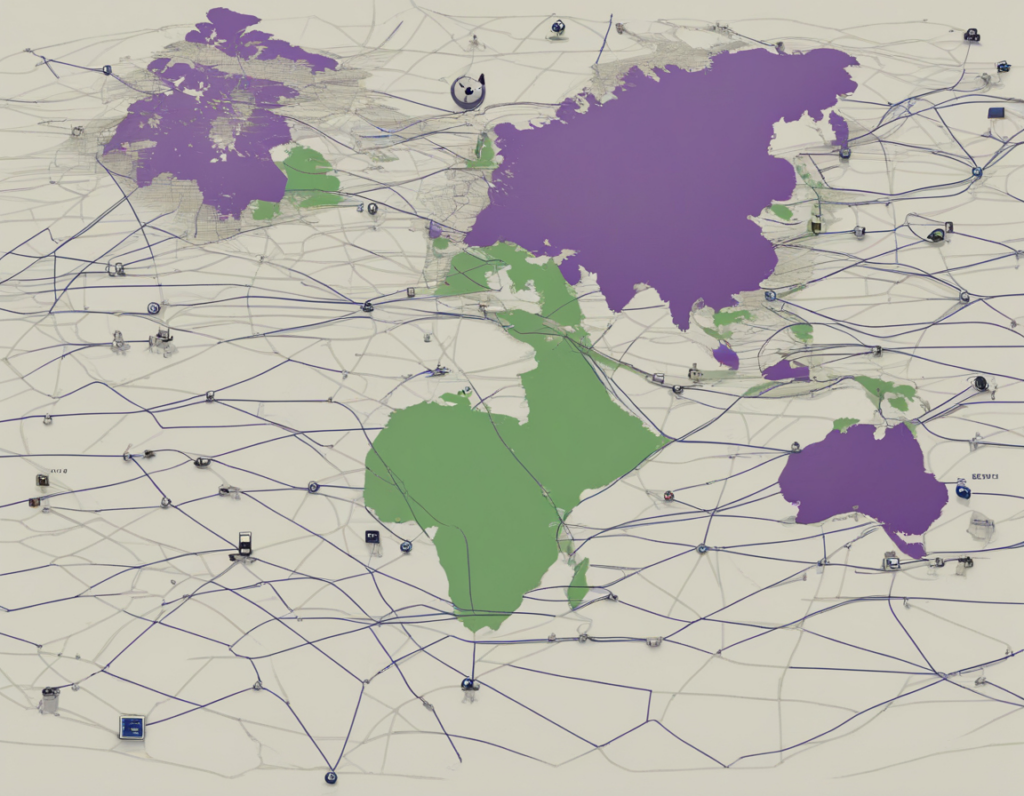In the vast digital expanse of the internet, the geographical location of an IP address reveals much about a device’s physical whereabouts. This unique string of numbers, essential for online communication, undergoes a transformation through IP address geolocation, linking it to a real-world geographic location. This process intricately maps an IP address to geolocation details such as country, region, city, and even exact latitude and longitude coordinates, offering invaluable insights for enhancing user experiences and bolstering cybersecurity.

What is IP Address Geolocation?
The geographical location of an IP address involves mapping an IP address to a real-world geographic location. This mapping can provide details such as the country, region, city, and sometimes even the precise latitude and longitude coordinates of the device. This information is invaluable for various purposes, from enhancing user experience to strengthening cybersecurity measures.
How Does IP Address Geolocation Work?
The process of IP address geolocation relies on vast databases that associate IP addresses with their corresponding locations. These databases are continuously updated to ensure accuracy. Several techniques are employed for geolocation:
- GPS-based Geolocation: Some devices, especially mobile ones, have built-in GPS capabilities. When available, GPS data can be used for highly accurate geolocation.
- Wi-Fi-based Geolocation: By scanning nearby Wi-Fi networks and their signal strengths, a device can estimate its location. This is often used in urban areas with dense Wi-Fi coverage.
- Cell Tower Triangulation: In the absence of GPS, a device can approximate its location based on the signal strengths of nearby cell towers.
- IP Address Databases: The most common method involves referencing IP addresses against databases that contain information about the physical locations of these addresses.
Applications of IP Address Geolocation
- Enhanced User Experience: Geolocation is widely used to provide localized content. This includes delivering content in the user’s language, offering region-specific promotions, and customizing the user interface based on location.
- Targeted Advertising: Advertisers leverage geolocation data to deliver targeted ads. For example, a local business might want to show ads only to users within a specific city or region.
- Fraud Prevention: Geolocation helps in detecting and preventing fraudulent activities. Unusual access from an unexpected location can trigger security measures to protect user accounts.
- Compliance and Regulation: In some cases, websites and services need to comply with regional laws and regulations. Geolocation data ensures that content is delivered in accordance with these requirements.
Privacy Considerations
While geolocation provides valuable functionalities, privacy concerns are paramount. Users should have control over the information shared, and companies must handle geolocation data responsibly to avoid misuse or breaches.
Conclusion
IP address geolocation is a powerful tool that enhances various aspects of online interactions. Striking the right balance between functionality and privacy is crucial for ensuring a positive and secure online experience for users around the globe. As technology advances, the accuracy and applications of IP address geolocation are likely to evolve, making it an area of continuous interest and development in the world of cybersecurity and user experience.












